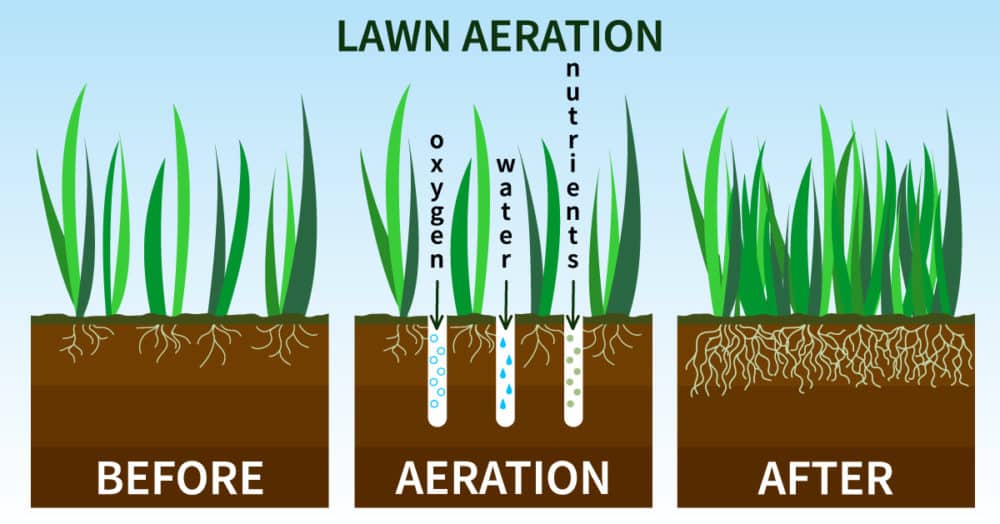Your Trusted Partner for Lawn Aeration
Lawn aeration services, otherwise known as core aeration or lawn plug aeration, gives your lawn a chance to breathe. This services supports healthy soil by ensuring that nutrients are able to effectively reach the soil beneath the grass.
Core vs. Liquid Aeration
Core aeration involves the use of a yard aerator that punctures small holes in the soil to allow grass roots to better absorb much needed water and nutrients. The end result is stronger roots and an overall healthier lawn. Green Envy also offers a liquid aeration application that is highly effective for homeowners who have in-ground sprinkler systems or prefer to avoid the look of “plugs” in their grass once the service is complete.
Pros/Cons of Core vs. Liquid Aeration
Core aeration has an immediate impact on your soil and the look of your grass, but the effects are relatively short lived. Liquid aearation on the other hand, will have a less immediate impact on your soil, but yield longer lasting and cumulative effects so you end up with better results over time.
How Does Liquid Aeration Work?
Aeration is more than creating airways in dirt. Liquid aeration breaks down dense soil particles by creating small pores in the soil profile to help loosen the soil. This allows more air, water and nutrients to reach deeper into the soil, promoting a healthy root system. Green Envy uses liquid aeration in each of our lawn fertilization services but we also offer a concentrated application as a standalone service for heavily compacted soil.


When is Aeration Beneficial?
- Compacted soil: If your soil is heavily compacted, their ability to function is impacted which will prevent them thriving.
- Excess thatch: Heavy lawn debris or thatch, this can also prevent roots from absorbing nutrients.
- Combination: Aeration can help to manage lawns that have both excess thatch buildup and compacted soil.
Aeration is typically done in early spring or late fall for cool season grasses like Kentucky Bluegrass. The end result is a lush, thick lawn in the coming weeks and months after your service. It’s ideal to get your lawn aerated once year or so based on the amount of compacted soil and lawn thatch you have. The more traffic, the denser the soil and more beneficial frequent aeration will be to your lawn.
How To Tell if Your Lawn Needs Aeration
- Do you have high foot traffic such as children and pets
- Is your lawn frequently driven on by cars or heavy equipment?
- Do you have new construction topsoil on subsoil that has been heavily compacted by construction equipment?
- Is your lawn taking too long to drain, resulting in puddles after it rains?
- Do you have heavy clay soil?
- Does your lawn dry out quickly or feel spongy?
- Is your lawn thinning, starting to show patches or show heavy wear?

